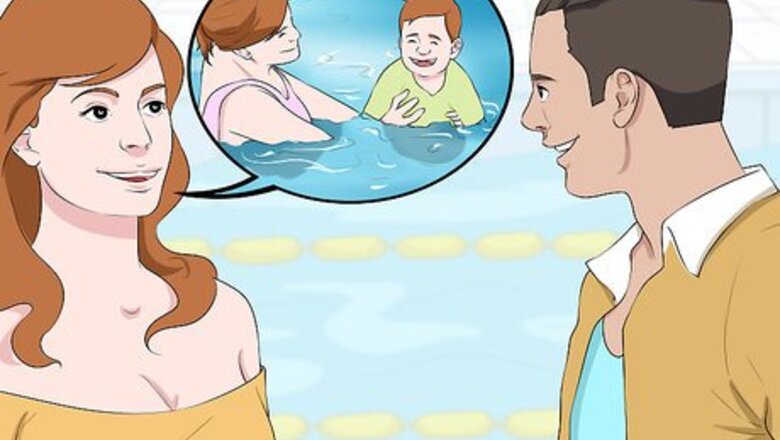
views
Preparing for Lessons
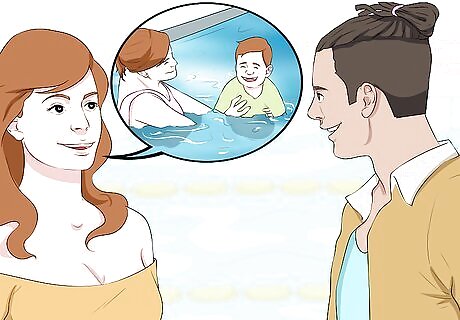
Inquire about their reasons for wanting to learn now. Some people want to learn how to swim for general safety reasons. Others want to learn so that they can safely take their kids to the pool. Still others might want to learn to swim in order to conquer a lingering fear from childhood. Understanding their reasons can help you decide how to proceed with the lessons and what skills to focus on. For example, if your student wants to learn to swim in order to accompany their children to the pool, you might want to spend more time perfecting their freestyle stroke, as this is the best way to reach someone who needs assistance in the water. Helping your student become more comfortable with this stroke can help them feel like they are achieving their goals more quickly.
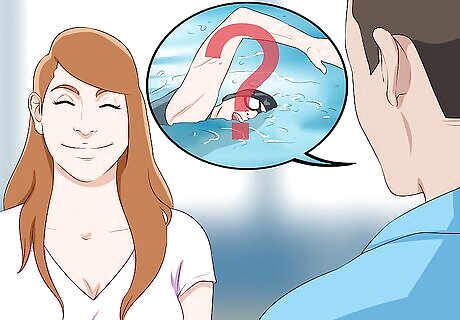
Assess their current skill level. Ask your student about any previous swimming experience. If the adult student already has some swimming experience, ask them to demonstrate some of the skills they already have. Ask them what they feel most comfortable with and least comfortable with so that you can build up their confidence accordingly.
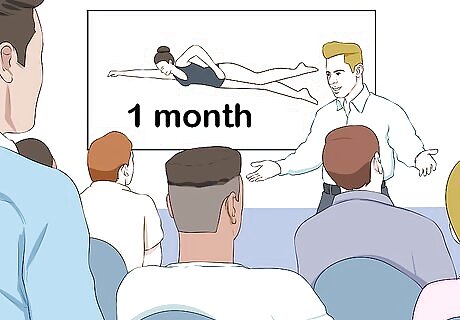
Create a goal-oriented timeline. Discuss the end results that your student hopes to achieve and come up with a reasonable plan for achieving those goals. Talk about how often you'll meet for lessons each week, whether they should swim on their own for “homework,” and provide a timeline for several important swimming milestones. For example, it might be helpful to plan with your student that they should be able to complete an unassisted lap across the length of the pool by a certain date.
Overcoming a Fear of Water or Drowning
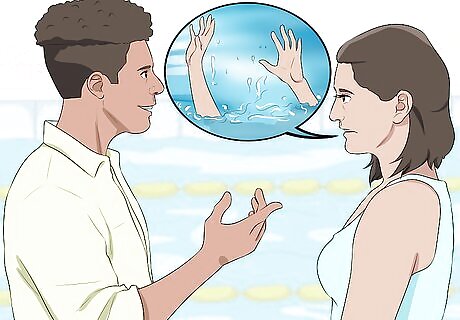
Discuss any possible fears related to swimming. It's quite possible that the reason your student hasn't learned to swim until now is because of a fear of the water or drowning. If this is the case, it's important that your student shares this information with you so that you know how to adjust your teaching styles. For example, you might need to spend more time helping the student get used to just being in the water, or just getting their face wet, if they have a fear of the water.
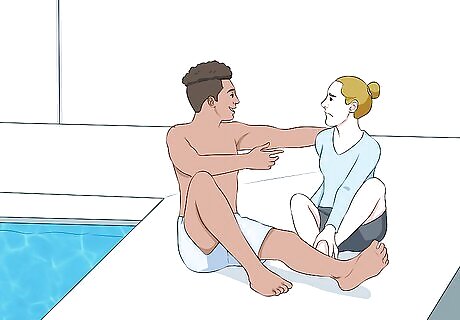
Establish trust outside the water. If a person has a fear of water, they are often told that there is nothing to be afraid of. Since they are afraid, simply telling them not to be afraid can cause you to lose credibility in their eyes. Establishing trust outside of the water, where they feel more comfortable, can help your adult student trust you and feel more confident in following your directions in the water. Start lessons outside the pool by helping them learn how to stretch properly before swim lessons. Be sure to give your student breaks if they seem overly nervous or anxious.
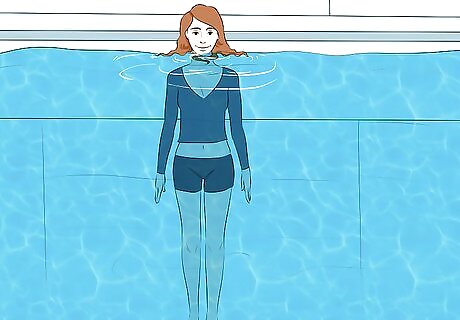
Instruct your student to wade into ankle-deep water. Ask your student to enter the shallow end of the pool and remain standing there in ankle-deep water. They can walk around, splash, or stand still – whatever they are most comfortable with. Let them stay for as long as they like. Alternatively, the student may sit on the edge of the pool and dangle their legs in the water. Once they are more comfortable, ask them to bend down and splash their face with water. The majority of their body is still outside of the water, but getting their face wet at this point can be quite helpful in overcoming fear. Children learning how to swim may need more supervision in this area. For an adult learner, give them the freedom to move around as they choose, doing whatever they feel comfortable with.
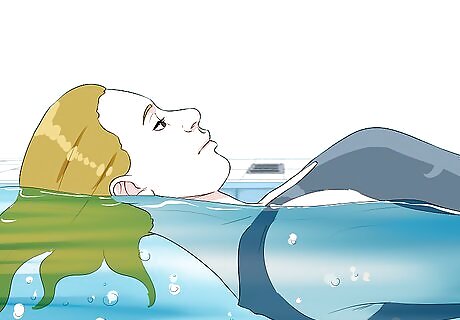
Focus on head buoyancy. Many adult swimming learners may have a slight fear of the water, which is why they never learned when they were younger. Try to get them to realize that their head will float in the water as this can be an immediate stress reliever for some students. Put your hand several inches under their face in the water and ask them to make their face reach your hand without using force – just by letting their face drift down. They will realize that this is impossible. Explaining the logic behind how buoyancy works may be beneficial for adult learners. Often, more information can be comforting to adults.
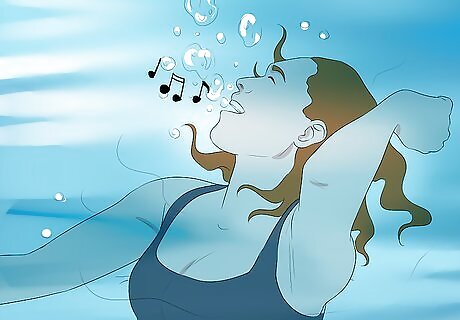
Get their faces wet. One of the first things adult swimmers need to do is to get comfortable with putting their faces in the water. Once they do this, the rest will come much more quickly. Try to get the students to sing into the water. This will make them expel air into the water and show them what it feels like to exhale bubbles while their faces are underwater.

Teach them to submerge their head under water. Ask the student to hold their breath and then slowly lower their head so that their mouth is under water – the water level should be between their mouth and nose. Remind them that they can breathe through their nose even while their mouth is submerged. Ask them to remain here for a few moments while they adjust to breathing through their nose. As they get more comfortable with this action, you can ask them to plug their nose and lower their head a bit more – just for a few moments each time. Eventually, they will work their way down to fully submerging their head under water.
Giving Instructions
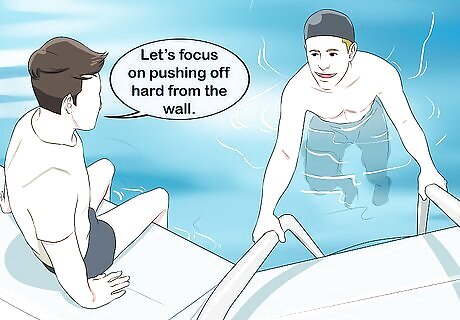
Be concise. Keep your instructions short and sweet. You don't want to overload the student with too much information while they are concentrating on improving their swimming skills. Instead of giving your student a multitude of things to consider, try focusing on one or two elements at a time. Try saying something like, “That was great! Now this time, let's focus on pushing off hard from the wall and kicking small.”

Teach the backstroke first. Start with a simple method to learn, like the backstroke. This technique relies heavily upon the body's own buoyancy and doesn't require a lot of fancy body movements that take time to perfect. Once your adult student has learned how to float on their back, you can start teaching the arm and leg movements. Ask your student to hold the wall behind their head while they float on their back, then instruct them to flutter kick their legs. This is a great way for them to get used to the motions. Once they feel comfortable with this, they can try flutter kicking while floating away from the wall. Finally, teach them to swing each arm straight back over their head and into the water to complete the backstroke form.
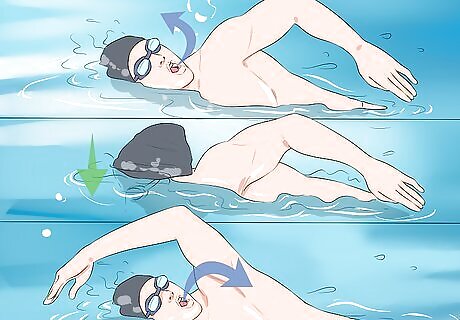
Teach your student the freestyle stroke. This is one of the most common swimming strokes, so it's a great starting point for beginning adult learners. After your student as mastered the flutter kick while hanging onto the wall, begin teaching them the proper breathing techniques. Ask the student to put their face in the water, turn their head to the right and breathe in, turn their head back down and breathe out under water, then turn their head to the left and breathe out. Practice these moves over and over until the student is comfortable. Next, try adding in the arm motions by teaching the student to flutter kick while bringing one arm over their head into the water at a time. After they have mastered this, you can start syncing the breathing with the arm movements.
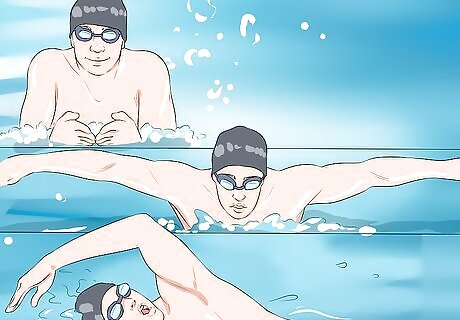
Teach a few more basic swimming strokes. You should demonstrate the forms yourself, so that your students have something to work towards. Show them some more basic swimming strokes – that includes the breaststroke, butterfly stroke, sidestroke, and elementary backstroke. The more comfortable the student gets with these forms, the more confident they will feel in the water. Adults, especially, enjoy structure and form. Learning formulated methods for swimming may help many of them feel more confident and successful.
Engaging with Adult Students
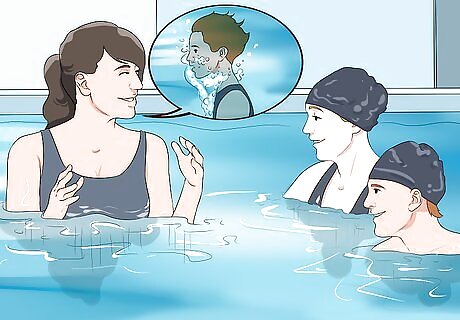
Speak to them like adults. It can often be easy to slide back into kid-oriented instruction styles during swimming lessons with adults. But remember that your adult students may already be anxious or uncomfortable. The last thing they need is to be treated like a child on top of everything else. Praise them when they deserve it, kindly explain how they can improve what they're doing, and always address them with respect and consideration. Give your students time to understand, to ask questions, and to learn at their own pace.
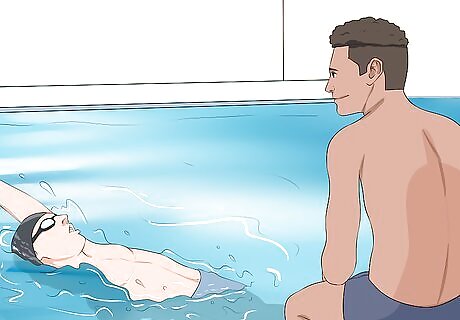
Adjust your teaching style. Each student learns differently and reacts to various teaching styles differently. Observe your students and see how they seem to learn the best. Then, tailor your instruction to fit each student. For example, some learn by watching someone else do the thing, while others learn by doing and receiving feedback.
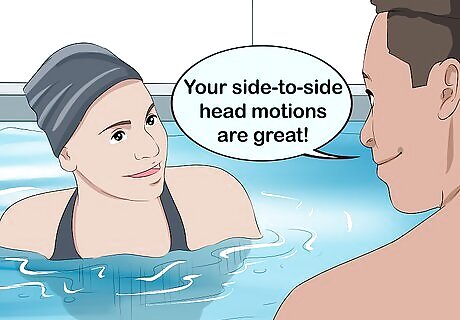
Stay positive. Don't focus on what the adult swimmer is doing wrong. Instead, encourage them by telling them what they are doing right and providing tips on how to improve what they are already doing. If the student is struggling with a particular stroke, try saying something like, “Your side-to-side head motions are great! Now let's focus on trying to keep your arms straight all the way through the stroke.”














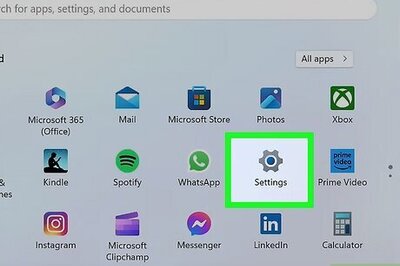


Comments
0 comment